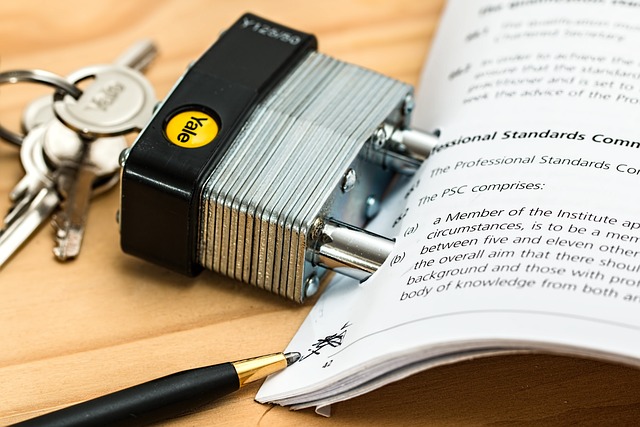In a world where technology has achieved astonishing advancements, the emergence of undress AI raises intriguing ethical and legal concerns. With the power to digitally remove clothing from images or generate lifelike nude representations of individuals, undress AI brings forth a range of complex legal implications. These implications delve into realms such as privacy rights, consent, intellectual property, and potential for misuse. In this article, we embark on a journey to explore the multifaceted legal dimensions associated with the use of undress AI, shedding light on the need for caution and thoughtful regulation to protect individuals and society as a whole.
Undress AI, driven by the rapid development of generative artificial intelligence (AI) models, presents a significant challenge within the legal landscape. As we navigate this uncharted territory, it becomes essential to address several key legal issues that surround the utilization of undress AI technology. From intellectual property rights to privacy concerns, this article aims to dissect and provide insights into the complexities of this technological innovation.
One of the foremost legal considerations when contemplating the use of undress AI revolves around infringements on intellectual property rights. The scraping of images from the internet to train AI models is a common practice but raises questions about copyright violations. Additionally, the question of consent becomes crucial, as undress AI could potentially be employed without the knowledge or permission of individuals depicted in the manipulated images.
Furthermore, privacy rights emerge as a critical concern. Undress AI directly infringes on an individual’s right to privacy by stripping away their clothing digitally. The possibility of non-consensual use, harassment, or exploitation raises alarm bells regarding the appropriate boundaries of this technology. Transparency and accountability in the development, distribution, and usage of undress AI are vital to safeguarding personal privacy and maintaining public trust.
As with any AI technology, biases and discrimination also come into play. Undress AI must be developed and implemented in a manner that avoids perpetuating harmful stereotypes, objectification, or promoting discriminatory practices. The presence of biases within training data and algorithms may further exacerbate inequalities and reinforce harmful societal norms.
This article explores these salient legal implications surrounding undress AI and tackles additional aspects such as explainability, liability, and potential solutions for regulation. Through a balanced examination of the subject matter, we aim to foster a deeper understanding of the legal framework necessary to govern the responsible use of undress AI.
In conclusion, the rise of undress AI poses intricate legal challenges that demand our attention and careful consideration. As we delve further into this sphere, it is imperative to strike a delicate balance between technological innovation and the protection of individual rights. By analyzing the legal issues with nuance and exploring potential strategies for regulation, this article endeavors to shed light on the broader societal implications that arise when technology marches into uncharted territories.
Table of Contents
- The Legal Implications of Using Undress AI for Image Manipulation
- Navigating Intellectual Property Rights and Privacy Concerns Surrounding Undress AI
- Ensuring Compliance with Laws and Regulations When Utilizing Undress AI
- Best Practices for Ethical and Responsible Use of Undress AI
- Frequently Asked Questions (FAQ’s)
- Closing Remarks

The Legal Implications of Using Undress AI for Image Manipulation

Navigating Intellectual Property Rights and Privacy Concerns Surrounding Undress AI
Intellectual Property Rights
When utilizing Undress AI, it is crucial to understand the potential intellectual property implications. The analysis and processing of images may involve copyrighted material, such as photographs, artwork, or brand logos. It is essential to ensure that the use of such material complies with applicable intellectual property laws and regulations.
Key points to consider:
- Obtain proper authorization or licenses for using copyrighted material in accordance with the relevant legal requirements.
- Respect and uphold the rights of creators, photographers, and artists whose work may be included in the images processed by Undress AI.
- Avoid using others’ intellectual property without permission, as it may result in legal consequences.
Privacy Concerns
Privacy is another crucial aspect to address when utilizing Undress AI. The algorithm’s ability to analyze and process images raises concerns about the protection of individuals’ privacy rights.
Key points to consider:
- Ensure compliance with applicable data protection laws and regulations to safeguard individuals’ privacy rights.
- Clearly communicate and obtain informed consent from individuals whose images are processed by Undress AI, especially if their personal information or identifiable features may be involved.
- Implement robust security measures to protect the confidentiality and integrity of the processed images and any associated personal data.
- Regularly review and update privacy policies and terms of use to align with evolving legal requirements and best practices.

Ensuring Compliance with Laws and Regulations When Utilizing Undress AI
In today’s rapidly evolving technological landscape, the integration of AI, such as Undress AI, raises important legal considerations. As businesses and individuals leverage the power of Undress AI to enhance their processes, it is crucial to navigate the legal implications to avoid any potential risks. Let’s delve into some key points that highlight the significance of :
- Data Privacy: One of the fundamental aspects of using Undress AI revolves around data privacy. As AI systems analyze and process vast amounts of data, it is imperative to handle personal information with the utmost care and in accordance with relevant data protection laws, such as the General Data Protection Regulation (GDPR) in Europe and the California Consumer Privacy Act (CCPA) in the United States.[1]
- Intellectual Property Rights: Undress AI, like other AI technologies, operates on complex algorithms and models. To ensure compliance, it is essential to respect intellectual property rights and avoid any infringement. This includes obtaining necessary permissions or licenses for using copyrighted materials and respecting patents related to Undress AI’s underlying technology.[2]
Moreover, it is crucial to stay updated with the evolving legal landscape surrounding AI technologies. Governments and regulatory bodies worldwide are actively working on formulating policies and regulations specific to AI. By keeping informed about these changes, businesses and individuals can adapt their practices proactively and comply with any new requirements that may arise. Ensuring compliance not only establishes trust and credibility but also mitigates any potential legal disputes or penalties.

Best Practices for Ethical and Responsible Use of Undress AI
In today’s AI-driven world, the use of technology like Undress AI brings about important considerations regarding its ethical and responsible use. It is crucial for organizations and individuals to understand the legal implications associated with the use of Undress AI to ensure transparency, accountability, and trust.
Points to Remember:
- Compliance with Data Protection Laws: Organizations must adhere to relevant data protection laws and regulations when using Undress AI. This includes obtaining necessary consent, ensuring secure storage and processing of personal data, and providing individuals with clear information about the use of their data.
- Respecting Privacy: Ethical use of Undress AI requires respect for privacy. Users should be informed about the collection, storage, and processing of their personal information. Transparency in how and when AI technology is used should be emphasized to build trust.
- Avoiding Bias and Discrimination: Developers should actively work to mitigate any biases or discriminatory behavior that may be present in Undress AI. Regular audits and evaluations can help ensure fairness, equal opportunities, and inclusivity.
Considerations for Legal Implications:
When using Undress AI, it is important to be aware of potential legal implications to avoid any unintended consequences. Some key areas to focus on include:
- Intellectual Property Rights: Ensure that the generated content by Undress AI does not infringe upon the intellectual property rights of others. Plagiarism and copyright violations can lead to legal liabilities.
- Authorship and Originality: Clearly define the ownership and authorship of AI-generated content. Acknowledge the involvement of AI technology and give proper attribution, if required, to maintain transparency and avoid misleading readers.
- Regulatory Compliance: Stay informed about industry-specific regulations and guidelines related to AI and content generation. Compliance with sector-specific laws will help mitigate legal risks associated with the use of Undress AI.
By following these best practices and considering the legal implications associated with using Undress AI, organizations and individuals can ensure ethical, responsible, and legally compliant utilization of this powerful technology.
Frequently Asked Questions (FAQ’s)
Q: What is undress AI?
A: Undress AI refers to an emerging technology that uses artificial intelligence (AI) algorithms to remove clothing from images or videos. It utilizes deep learning techniques to digitally manipulate visual content and create the illusion of someone being undressed.
Q: Are there any legal issues associated with undress AI?
A: Yes, there are several legal implications associated with the use of undress AI. The following key issues should be considered:
1. Privacy and Consent: Undress AI raises concerns regarding privacy and consent. Using this technology to remove someone’s clothing without their explicit consent is a violation of their privacy rights. Consent should be obtained from individuals before their images or videos are manipulated using undress AI.
2. Non-consensual Use: The non-consensual use of undress AI can lead to the creation and distribution of explicit or intimate content without the subject’s permission. This can potentially result in cyberbullying, harassment, or revenge porn, which are illegal in many jurisdictions.
3. Intellectual Property: Using undress AI on copyrighted images or videos without permission from the copyright holder may infringe on their intellectual property rights. This includes using undress AI on photographs or footage protected by copyright law.
4. Misuse and Harmful Intent: Undress AI can be misused for unethical purposes such as creating and sharing non-consensual explicit content, blackmail, or defamation. These actions can lead to legal consequences related to privacy invasion, defamation, or harassment.
5. Liability and Accountability: Determining liability and accountability for the use of undress AI can be challenging. If the technology is used to harm individuals or violate their rights, it may be necessary to identify and hold responsible the individuals or organizations involved in its creation, distribution, or use.
Q: How can the legal implications of using undress AI be addressed?
A: Addressing the legal implications of using undress AI requires a combination of legislative measures, technological solutions, and ethical frameworks:
1. Legislation: Governments can enact laws that explicitly prohibit the non-consensual use of undress AI and impose penalties for its misuse. These laws can also protect individuals’ privacy rights and provide remedies for victims of unauthorized image manipulation.
2. Content Moderation: Online platforms and social media networks should implement robust content moderation mechanisms to detect and remove non-consensual explicit content created using undress AI. This can help prevent the dissemination of harmful material.
3. Education and Awareness: Promoting awareness campaigns and educational initiatives can help individuals understand the risks and potential harms associated with undress AI. This can encourage responsible use of technology and foster a culture of consent and respect for privacy.
4. Ethical Guidelines: Developers and organizations working on AI technologies should adhere to ethical guidelines that prioritize user consent, privacy protection, and responsible use of undress AI. These guidelines can help shape the development and deployment of AI tools in a socially responsible manner.
By addressing these legal implications, society can strive to strike a balance between the potential benefits of AI technology and the protection of individuals’ rights and privacy.
References:
[1]: Artificial Intelligence Key Legal Issues: Overview – Practical Law A Practice Note providing an overview of key legal issues relating to the use, acquisition, and development of artificial intelligence (AI). URL: [1]
[2]: Artificial Intelligence Technology: Legal Implications and Challenges – This article discusses the legal challenges, including liability and accountability, associated with AI technology. URL: [2]
[3]: The legal issues presented by generative AI – This article explores the legal questions raised by generative AI, which can be relevant in the context of undress AI. URL: [3]
Key Takeaways
In conclusion, the use of undress AI raises significant legal implications that cannot be ignored. As we delve into the realm of artificial intelligence, questions surrounding creativity, ownership, and copyright are being redefined[1]. While AI-generated content challenges the very essence of artistic expression and threatens traditional concepts of intellectual property, it also presents an opportunity for new discussions and solutions[2]. As the potential of AI in various fields continues to unlock, the legal landscape must adapt to ensure that the rights of artists and creatives are protected, and fairness prevails.
In the world of English law, there is an ongoing endeavor to harness the potential of AI. Different components are being explored, targeting a range of issues in the legal domain[3]. This reflects the recognition that AI is not only transforming creative industries but also has significant implications for the legal framework that governs them.
It is essential to navigate these legal implications surrounding undress AI thoughtfully and ethically. The challenges and opportunities presented by this technology require thoughtful conversation, collaboration, and the development of appropriate regulations to strike a balance between innovation and safeguarding the rights of individuals involved. Only through careful examination and consideration can we ensure that undress AI and other AI applications are used responsibly and for the benefit of society as a whole.
In conclusion, the emergence of undress AI sparks a new chapter in the ongoing dialogue about the intersection of technology and the law. Both creators and legislators must work together to address these legal implications and shape the future of AI in a way that respects the rights and interests of all parties involved. By doing so, we can seize the transformative potential of AI while upholding the principles that underpin our legal systems.
Leave a Reply